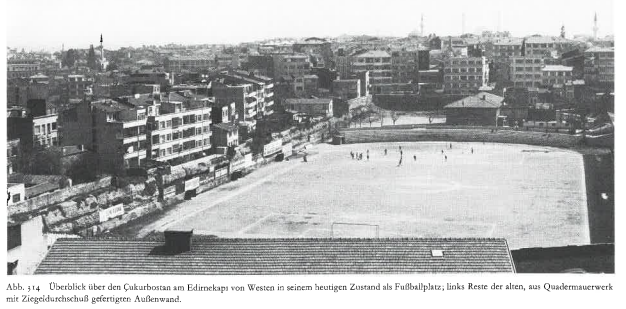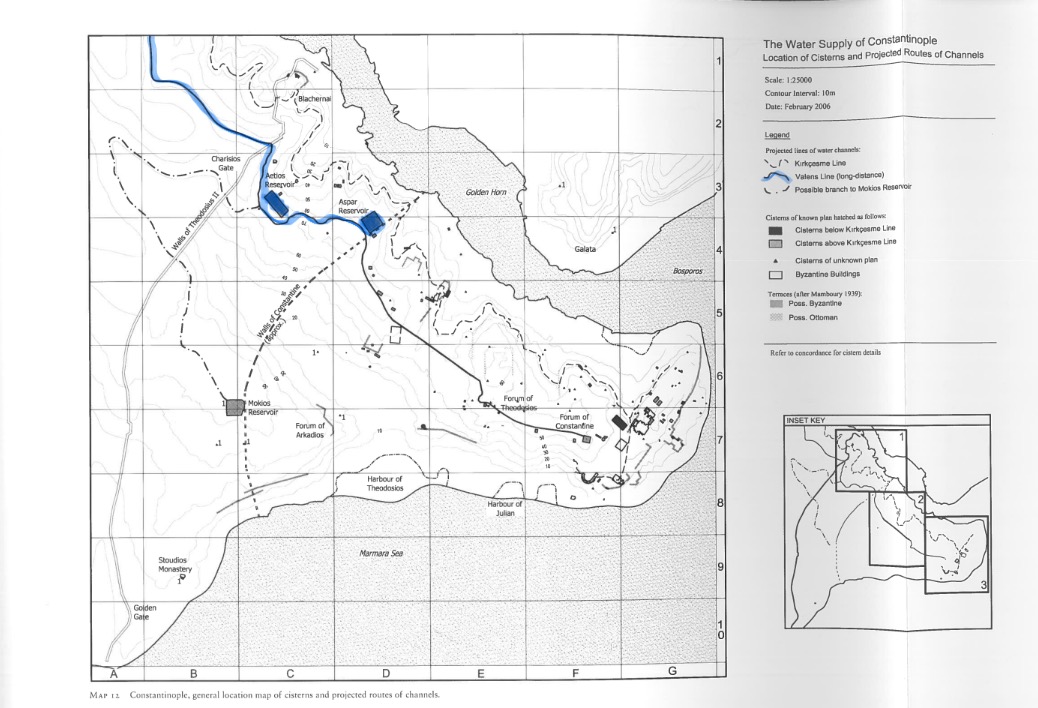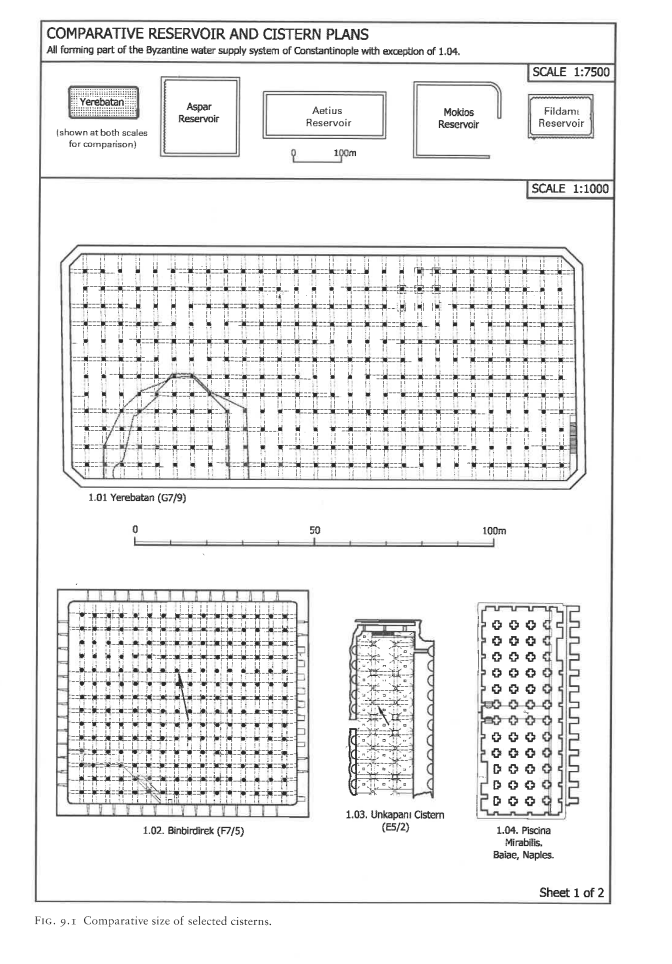The Cistern of Aetius has often been confused with the Cisterns of Aspar and Bonus.
Technical specifications
The cistern is 244 × 85 m in size with walls that are 13-15 m high (= 269,620-311, 100 m3). Due to the water pressure, this cistern could have withstood filled up to a depth of 9,5 m. The north-west wall near the west corner contains a channel measuring 1,20 m × 0,67 m. The channel was only about 6 m above the floor of the reservoir. This may be a later maximum capacity, or this may have been originally a high-level outlet (Crow et al., 2008, p. 130).
Major cisterns like these (Aetius, Aspar) seem to have been built alongside the new high level water supply on purpose (Crow et al., 2008, p. 123). Likewise, the rectangular shape of this cistern was dictated by the slope on which it was located. It was built of alternating bands of brick and stone-faced mortared rubble (brick bands: 0,35 m, stone bands: 1,8 m). The north wall was 5,2 m thick (Crow et al., 2008, p. 129).
History
During the 10th century, Hero of Byzantium still attests both the Aetius and Aspar reservoir.
It also seems to be listed in a late list of wonders of the city as "Of the Prodromos" (Codex Matritensis graecus 86) alongside Justinian's, Theodosius' and Arcadius' columns and other cisterns such as that of Aspar and three unnamed ones which had lost their names by the Palaiologan period (Crow et al., 2008, p. 22).
During the 16th century it was used as a garden, and as a sports ground in more recent times. Since 1962, it is a football stadium (Vefa Stadı, housing Karagümrük Spor külübü).


